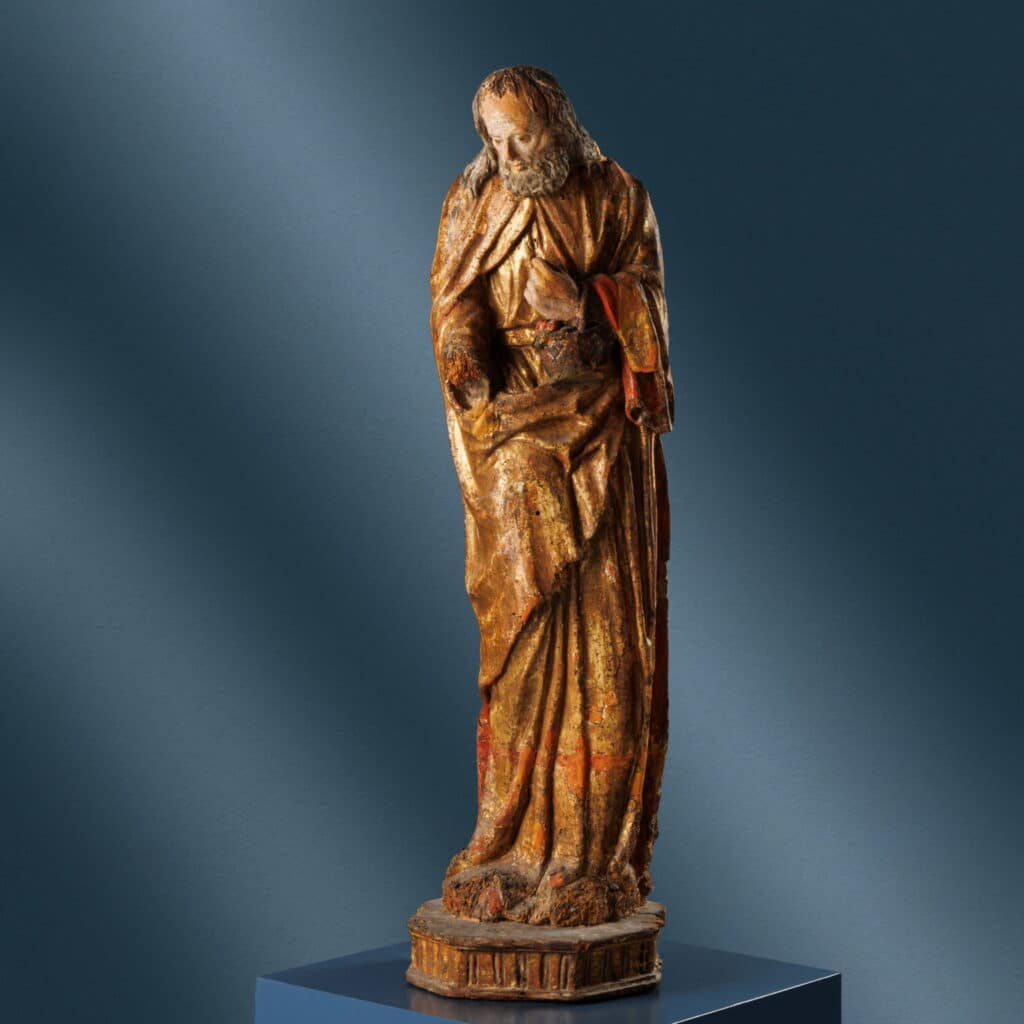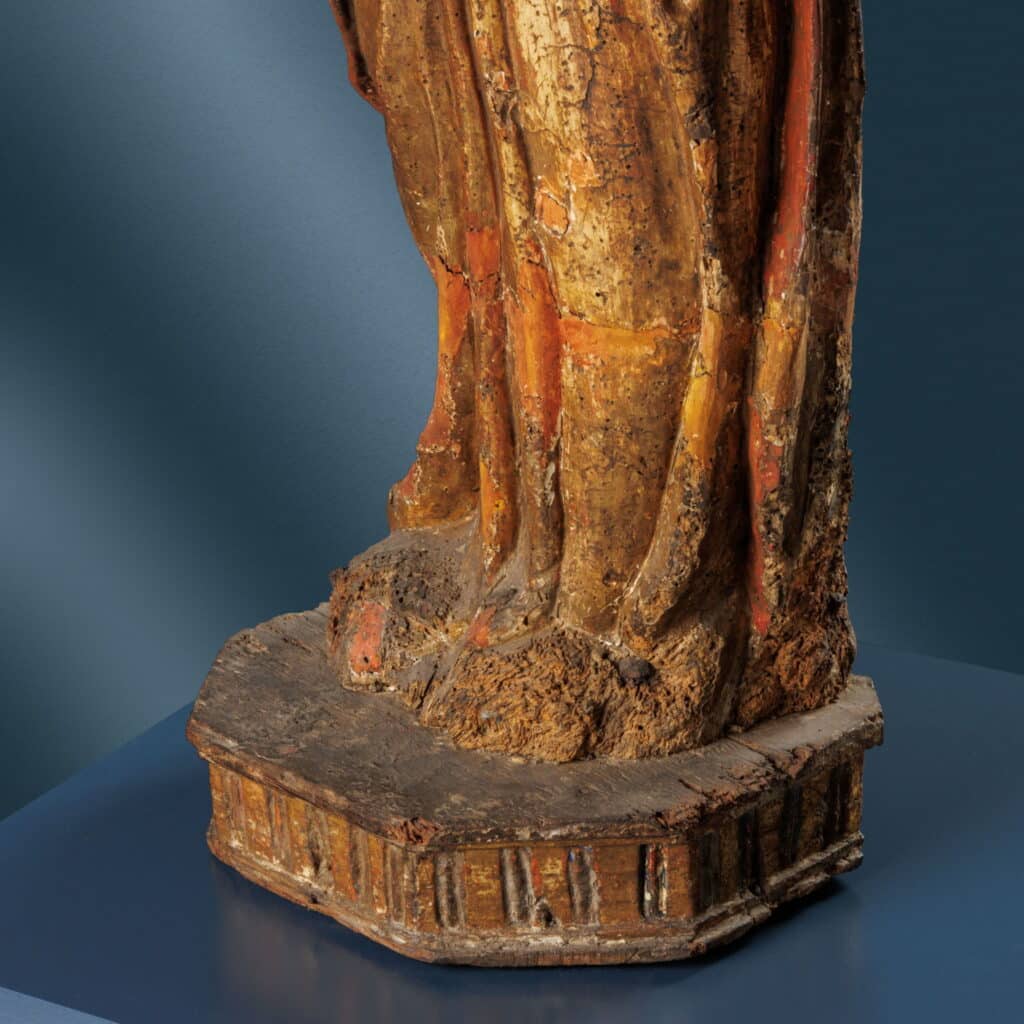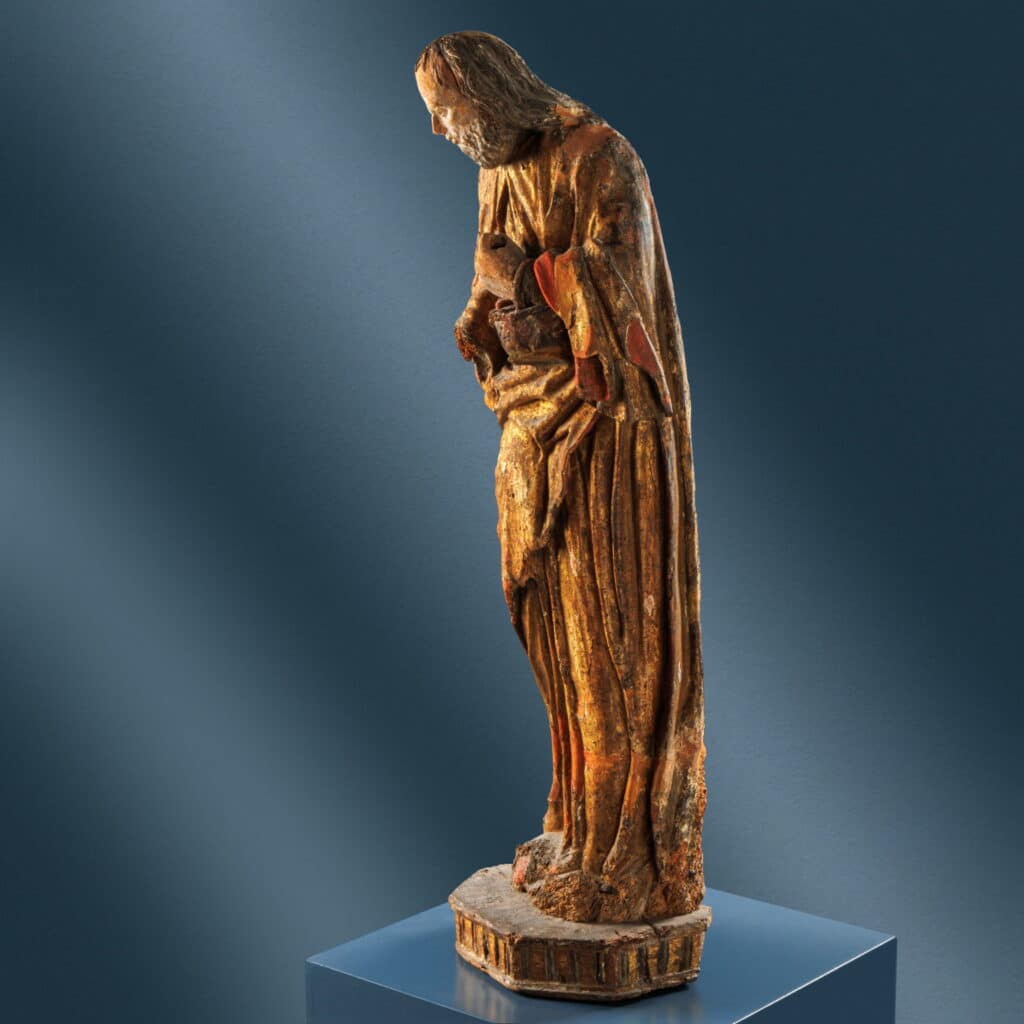San Gerardo dei Tintori. Lombard carver. Late 15th century
Description:
Sculpture depicting Saint Gerard standing, with a slight Anchement, on a hexagonal base; his head is slightly tilted downwards and he has long hair and a thick, slightly graying beard, indicating his advanced age. The saint is dressed in a long tunic tightened at the waist by a belt, while a long cloak rests on his shoulders; in his left hand he holds a wicker basket full of cherries. It presents shortcomings in the polychrome painting and in the ancient gilding; mutilated right hand.
Dimensions: 100 x 29 x 24 cm
CODE: ARARAR0204984
Historical-stylistic analysis:
Studied by Giuseppe Sava, the sculpture constitutes an important historical testimony, being the oldest known plastic attestation of San Gerardo dei Tintori; co-protector together with Saint John the Baptist of the city of Monza. The saint is recognizable thanks to the attribute of the basket of cherries, in reference to a miraculous episode he performed. According to his hagiography, Saint Gerard used to spend a lot of time in prayer at the cathedral of Monza, so much so that one evening in December, he asked the custodians to let him pray all night.
He promised them a basket of cherries and, given the harsh winter season, the event was seen as supernatural and therefore became part of the saint’s typical iconography. Even the cloak with which he is presented refers to the miracle of the cloak lying on the water: Gerardo in fact sailed through the waters of the flooded Lambro river, managing with faith to save the hospital he himself founded from the disastrous flood. The iconography is typical of the saint and can be found in the known pictorial representations, among which the most famous is certainly the fresco by Bernardino Luini in the Monza cathedral.
Here too the figure of the dyer (from the work of the family of origin) is depicted with a cloak, a twig of cherries and a stick clutched in his hand; this last element must also have been present in our sculpture, as attested by the through hole in the hand. From a stylistic point of view, the wooden statue in question still shows the adoption of a Gothic phrasebook, revealed by its slender proportions and curved posture, but on the other hand it already shows a confidence towards models which, at the end of the fifteenth century, were spreading throughout the Lombardy and Milanese areas. In particular, a suggestion derived from the older works of Giacomo del Maino and the workshop of Giovan Pietro and Ambrogio De Donati can be recognised.
In the rear part it has a metal plate equipped with a hook, allowing us to hypothesize its original placement inside a niche or an ancona.
- San Gerardo dei Tintori. Lombard carver. Late 15th century

Antiques, Art and Design
FineArt is the new ambitious Di Mano in Mano project that offers an exclusive choice of antiques and design works, presenting them for their singularity and uniqueness.









